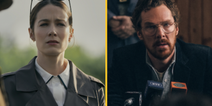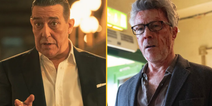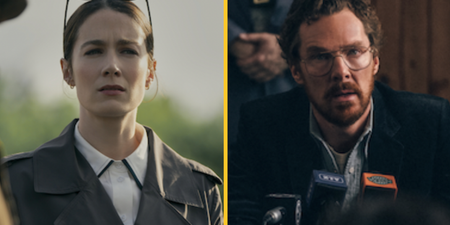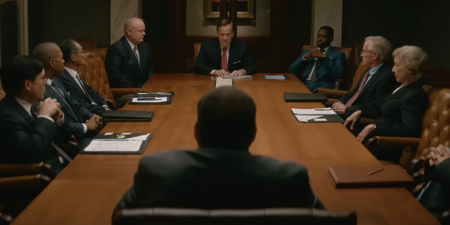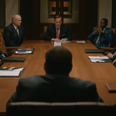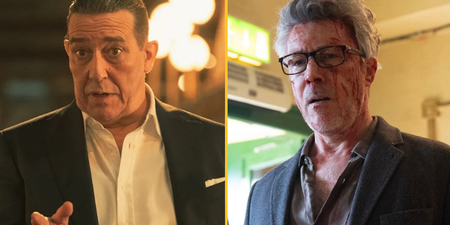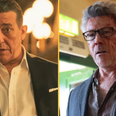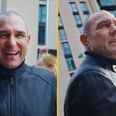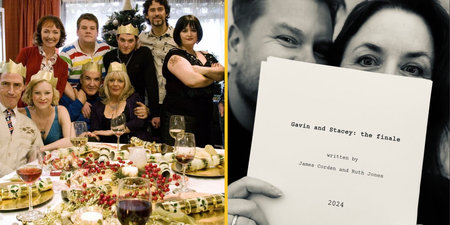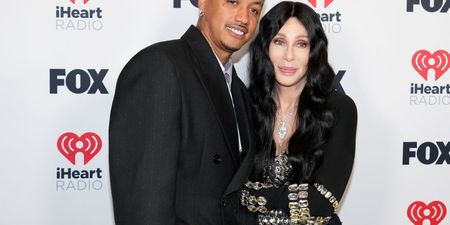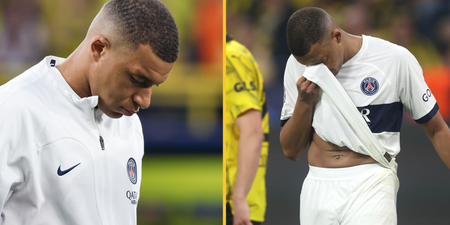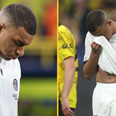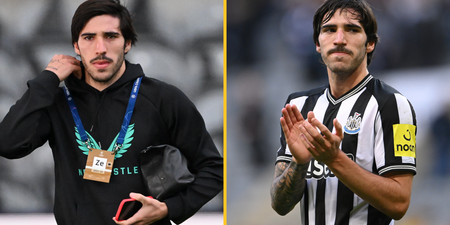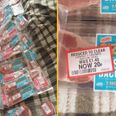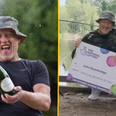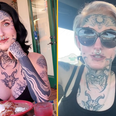Ted Bundy killed more than 30 women across America during the seventies. As Netflix launches a new docu-series, ‘Conversations With A Killer’, JOE talks to Kathy Kleiner: the one that got away.
A little trunk full of books probably saved Kathy Kleiner’s life.
It lay between the twin beds in room eight of the Chi Omega sorority house on the campus of Florida State University that she shared with her friend, Karen Chandler. A lamp sat awkwardly on top of it, alongside her glasses that she could see little without.
She’d taken them off around 10.30pm on the day that changed everything when she and Chandler, tired from celebrating a friend’s wedding had decided to turn in. As always, they’d left the windows open and the curtains pulled back. Kleiner loved how the sunlight would illuminate the room in the early mornings, and the noise the wind would make as it blew between the plants that hung from the curtain rail.
Some five and a half hours later, at around 3am their door clicked open and a man entered, leaving behind him the carnage he’d already wrought in rooms four and nine: Lisa Levy in four was a freshman from St Petersburg, majoring in fashion merchandising.
She would be the first to die – beaten, raped, strangled and repeatedly bitten before being sexually assaulted with a hairspray bottle. Margaret Bowman in nine was 21 and studying art history. Her skull was crushed by a piece of wood. She was then strangled by a pair of tights. Neither girl awoke during the attack.
But Kleiner, oblivious to what had taken place outside, did wake up. And she did so because the man wanted in more than four states for kidnapping and multiple murder charges, who’d already escaped from custody twice had fallen over that trunk.
In the darkness she can’t ‘see’ him but she can sense him, this black mass above her. What she does see is the tree limb milliseconds before it repeatedly smashes into her face, breaking her jaw in three places, knocking her out and ripping a hole in her cheek so wide that the skin folds back almost to her ear. Minutes later when she comes around Kleiner can see a different scene. Room number eight is now light and she’s staring not at the man who hit her but at sorority president Jackie McGill. She sits up in bed and crosses her legs as McGill tries to get her to talk. But all she can do is rock back and forth as blood pours from her cheek and mouth. She tries to call for her parents’, but the sound is muffled and indistinguishable because her tongue has been severed almost in two. Her own blood drips from the ceiling and the walls, and several of her teeth lay in the red-soaked bedclothes. McGill, who was the first person into the room after the attack assumes Kleiner is dying.
But she’s very much alive. And although she doesn’t know it, she’s one of only a small handful of women to live through an attack by one of America’s most notorious serial killers, Ted Bundy. On this night Kathy Kleiner pulls through.
It’s January 15th, 1978. Yet again she is a survivor.

Kleiner was born in 1957 in Miami to Rosemary and Jackson, and she especially doted on her father, often sitting on his lap to play Chinese checkers with him as he smoked his cigars. But when she was five he suffered three massive heart attacks and died, leaving her little world empty.
“It was a confusing time,” she says, her voice in the middle-distance. “I’d sit at the window and look for him and ask my momma when he was coming home.”

Two years later her mother remarried a German man who took Kathy and her elder siblings under his sizeable wing – he was 6’3, her mother only 5’2 – and helped her pick up the pieces left behind after Jackson’s death.
Then, aged thirteen Kleiner was diagnosed with systemic Lupus erythematous, a long-term condition causing inflammation to the joints, skin and other organs for which there’s no cure. She was given experimental chemotherapy and hospitalised for three months. She lost her hair and subsequently home schooled for a further year whilst doctors enforced strict rules: no sport, no sun and no future children.
“It was a tough time. We were living in Fort Lauderdale and my parents worked in north Miami which was about two hours away, so I was alone at home for much of the day”, she tells me. “I’d look outside and see kids playing and long to be out there with them. I was so bored. I used to dial 0 for the operator and ask him to talk to me. I’d explain who I was and sometimes I’d get a really good one and he’d chit-chat to me for a while.”
By the summer of 1976 she’d recovered enough to enrol at Florida State University to study interior design, choosing Tallahassee because it was as far away as she could get from her mother – who’d wrapped her up in cotton wool after her illness – but could still get state tuition fees.

Whilst Kleiner was moving into her all-girls dormitory ahead of her freshman year, Ted Bundy was in prison. In March of that year he’d been convicted of the aggravated kidnapping of a young woman named Carol DaRonch near Salt Lake City, Utah. He hadn’t been accused or convicted of any violent crime except this one. No-one knew then how many women he’d already murdered in Washington, Oregon, Utah, Idaho and Colorado – more than thirteen – and many thought him incapable of doing so.
Born Theodore Robert Cowell at the Elizabeth Lund Home for Unwed Mothers in Vermont, he was raised largely by his grandparents who were ashamed of their daughter’s out-of-wedlock pregnancy. For nearly all of his childhood, he believed his mother to be his sister. Bundy would describe himself as a loner, without the natural sense of how to develop friendships.
“I didn’t know what made people want to be friends,” he said after his capture. “I didn’t know what underlaid social interactions.”
For all that, he harboured aspirations to become the governor of Washington State. He studied Chinese and then law and was so well thought of in the community that he became assistant director of Seattle’s Crime Prevention Advisory Commission the same year he started killing in and around the city. In that office, he wrote a rape‐prevention pamphlet for women.
Despite his natural shyness Bundy was charming. And handsome. When he’d stepped into the courtroom in Utah to face trial for that attempted kidnapping it was difficult for people to countenance that this young man could be guilty of anything.
He was the archetypal blue eyed All-American boy, dressed in turtlenecks and smart blazers. The New York Times described him as ‘Kennedyesque’. He carried himself with confidence and exchanged jokes with local newsmen. He was cool, engaging, relaxed. Just two years earlier he’d been known in his home town of Seattle as ‘Mr Up-and-Coming Republican’. He barely looked capable of a parking ticket.
And yet.

His first victim had been Lynda Ann Healy, a 21‐year‐old University of Washington student who vanished from her rented room next to the campus.
Thirteen months later, forestry students walking in the countryside near the base of Mount Taylor, a little over twenty-five miles east of the city, found a shallow grave. In it was Healy’s jawbone along with the remains of three other young women: Susan Rancourt (who disappeared after attending a meeting at Central Washington University), Roberta Parks (who vanished from Oregon State University), and Brenda Ball (who went missing after leaving the Flame Tavern in the Burien area of Seattle).
This discovery had come a few months after two grouse hunters stumbled across the remains of three more bodies ten or so miles away along I-90: Georgann Hawkins (abducted from an alley behind her house), Janice Ott (disappeared from Lake Sammamish State Park in broad daylight), and Denise Naslund (who went missing four hours later from the same park).

Bundy killed four more times in 1974 – 16-year-old Nancy Wilcox and three seventeen-year olds, Melissa Anne Smith, Laura Aime and Debra Jean Kent – but he was able not only evade capture, but to seemingly leave little or no trace evidence. The police, who rarely shared information across state lines, had very few leads. And when Bundy left Washington for Oregon, Oregon for Utah, Utah for Idaho and Idaho for Colorado it was as if he’d turned over a new page each time.
At that time the name ‘Ted Bundy’ meant nothing to Kathy Kleiner who was enjoying her first year at Florida State. She’d not heard of the ‘Ted Murders’ as they’d come to be known on the West Coast – reference to witness statements about a stranger who’d approached women in a Volkswagen Beetle calling himself ‘Ted’.
She didn’t see the news when he was sentenced to serve 15 years in Utah State Prison for trying to kidnap DaRonch. Or when he jumped out of the window of the Pitkin County Courthouse in Aspen and disappeared into the mountains for six days after being charged with the murder of 23-year old Caryn Campbell who’d disappeared somewhere along a well-lit hallway between the lift and her hotel room after a meal with her fiancé and his two children.
Her nude body was found a month later in a snowbank three miles down the mountain. And Kleiner didn’t hear the news in late 1977 that he’d escaped again, this time from prison in Colorado Springs after climbing through the ceiling of his cell and into the apartment of the chief jailer, stealing clothes from the closet and casually walking out the door to kill again.
It was sixteen days before Kathy Kleiner’s life would change forever.

As a sophomore Kleiner joined Chi Omega, the world’s largest women’s fraternal organisation after a recommendation from a high school friend.
She’d also moved out of her women’s-only dorm and into the impressive two storey sorority house at 661 West Jefferson Street, across the road from the University, much to her mothers’ joy as ironically, she believed it to be a much safer proposition for the daughter she constantly fretted over.
“It was such a sight to behold, so beautiful” says Kleiner of the building.
“It had these majestic pillars at the front, with two double doors. It was grand and pretty and very southern in its look. When you walked in the front door, the first thing you saw was this wonderful winding staircase to the second floor that dominated the hall.
“There was a social living room where we’d sit and entertain, a rec-room with sofas and televisions where you could walk round with your pyjamas on, and beyond that a kitchen where we had a cook who did all our meals. At the top of the stairs was a bathroom and then down each side of the corridor, a row of bedrooms, maybe eight on each side.”
Kleiner and Chandler’s room was halfway down. It was small but homely: two twin beds ran parallel to one another, each with a dresser and a small desk.
And between the beds lay the trunk.
“The trunk………” Kleiner’s voice fades away as she thinks of its significance in her story. “I really can’t remember if it was Karen’s or mine or where it had come from. It was a sort of dark green, full of our books and we’d store things on it, plants, lamps, and the like.
“It fitted the room nicely. I remember that my momma and I had been shopping before Christmas and we’d bought a new bedspread and new pillowcases and pyjamas and it all looked so pretty.”
Again, her voice falters just a little, the reality of what comes next suddenly apparent.
It was warm and muggy evening in Florida on January 15th, 1978 as a series of winter storms approached. Bundy spent the evening at a local bar called Sherrods where he watched the patrons.
Later in court, one of the girls who’d been there that night told the jury that he’d “stood out to her” because his behaviour was “unusual”. Connie Hastings also testified that he’d caught her eye several times.
“It was a stare that kinda bothered me,” she recalls. “I felt very uncomfortable with it.”
Bundy left the bar and wandered around, stopping two men on the street opposite the Chi Omega house to ask for directions to the nearest Holiday Inn.
He never made it to the hotel.

When the paramedics get to Kleiner they tell her that the damage to her face is so bad that they believe she’s been shot. She’s in extreme pain, but more than anything she’s confused. Confused by why she’s there, by what’s happened to her and why she can’t say the words that are forming in her head.
Why there’s so much blood on her new bedspread.
“I was laying on my left side facing him when he fell over the trunk,” Kleiner tells me. “I saw his dark outline and then the piece of wood slammed down into my face.
“I know it sounds strange, but it didn’t hurt. It just felt like a thud, like a pressure on me rather than anything else. At that point I groaned or screamed, and he turned and saw Karen start to wake so he attacked her too before coming back to finish me off. And then he really hurt me.”

Bundy’s first blow hit Kleiner in the shoulder, wounding it deeply before hitting her so hard in the face that doctors were removing shards of wood embedded in her skin and inside her mouth long after she reached hospital.
“He was out of control at this point and the funny thing is, I think he was in control when he went into Lisa’s room to kill her.”
“How do you mean,” I ask, confused that a serial killer would ever be ‘in control’.
“I don’t know,” she replies. “Just that I feel like he knew what he was doing, he knew he didn’t have to kidnap anyone, he could just do what he came for. But then when he went across the hall to Margaret, the adrenaline was really flowing, and he was kinda’ getting out of control and he couldn’t stop. He couldn’t.
“And by the time he got to our room he was in a complete frenzy.”
Bundy would have almost certainly killed Kleiner and Chandler were it not for the trunk, and from a car that pulled into the car park behind the girls’ apartment, its headlights illuminating the room and causing him to first pause, and then flee. “God’s light,” she calls it.
Kleiner spent the first days after the attack in hospital under armed guard, her jaw wired shut as Bundy remained free. Only her immediate family were able to visit her as police didn’t want anyone contaminating her fractured memories of that night.
The authorities also decided not to tell her that Lisa Levy and Margaret Bowman were dead in case it affected her recall. It was only after she was asked to go back to Chi Omega to ascertain if anything was missing from her room that she began to piece together what had happened to her friends.
“There was police tape everywhere,” says Kleiner of her arrival back at 661 West Jefferson. “And I was so frightened to go back inside. When I got to the top of the stairs and there was more tape outside the girls’ rooms I started to think about what might have happened, who else had been hurt.
“At the door of my room I paused and then it opened and it just hit me. It was devastating to see the actual scene. There was blood all over my walls and my ceiling. All my new stuff, my bedspread……it looked like someone had taken a red paintbrush and splashed it everywhere.”
I ask her what she sees when she closes her eyes and thinks of that room. Our conversation has been so remarkably upbeat to that point that I’m expecting to hear about the pretty room she shared with Karen Chandler and I’m caught unawares by her power of her answer.
“All I see is blood,” she says. “Blood everywhere.” Her voice breaks a little and she pauses. “I don’t see the happiness in there. I see the sadness. It’s there. It is. That’s what I see.”

Bundy was arrested in Pensacola a month after the attack, but not before he’d killed again: 12-year old Kimberley Leach was abducted from school in Lake City, some 108 miles from the Chi Omega house, her partially mummified remains found in a pig shed.
But this time there was no getting away, no escape. He was put on trial, first for the attack in Tallahassee, then for the murder of Leach and found guilty on both counts before being sentenced to death plus 196 years. And Kleiner helped put him away by taking to the witness stand and giving evidence.
“I wasn’t scared of him,” she says as she recalls her time on the stand. “He sat there just a few feet from me and looked at me and by God I looked right back at him.
“Every time I answered I looked straight at him. I stared him down. I wouldn’t give him the satisfaction of me looking away. I didn’t hate him, I was just disgusted by him, just sick to my stomach. But I was not going to look away.”
Forty-one years have passed since that night in room eight. Thirty since Bundy was electrocuted at Florida State Prison on the morning of January 24th, 1989 and Kleiner cried and cried like she’d never done so before or since, releasing the demons that had festered inside her for more than a decade.
Then, once she’d composed herself, she turned to her husband and asked to go to breakfast so she could start her life over.
“The attack defined me because I’m stronger now than I ever was,” she says.
“I was attacked and in a horrible place physically and mentally, but I didn’t want to stay in a little box that was scared of the world.
“It was very important for me to keep going. I kept a beautiful scene in my head of a beach in the Florida Keys and each time I took a step away from him I’d mentally go there and place another foot in the sand. It enabled me to compartmentalise the things that happened. To put them away.”
As we wrap up the interview and say our goodbyes, I thank Kleiner for her time. She’s generous and giving and incredibly strong. I tell her I’d have been on the floor if I’d have been though half of what she has, and she laughs and then there’s a silence between us.
“You know what, one more thing, Simon,” she says, filling the dead air.
“What’s that, Kathy?” I ask.
“We have a little library in our house and I have part of a shelf full of Bundy books. I didn’t want him to have a hold on me for the rest of my life. If I was to truly survive all this, I had to learn everything I could about him. And by not running away it’s helped me to heal.”
Her voice finally breaks and she’s fighting back the tears that haven’t come at any point in the eighty-five minutes that we’ve talked.
“I wanted to let people know what happened to me, not hide away. I’d speak to people on the street and say ‘Hey, I’ve got a story for you’. Talking to you has brought some of that emotion back, but I faced it down like I’ve always done. That’s how I healed.
“That’s how I survived.”


